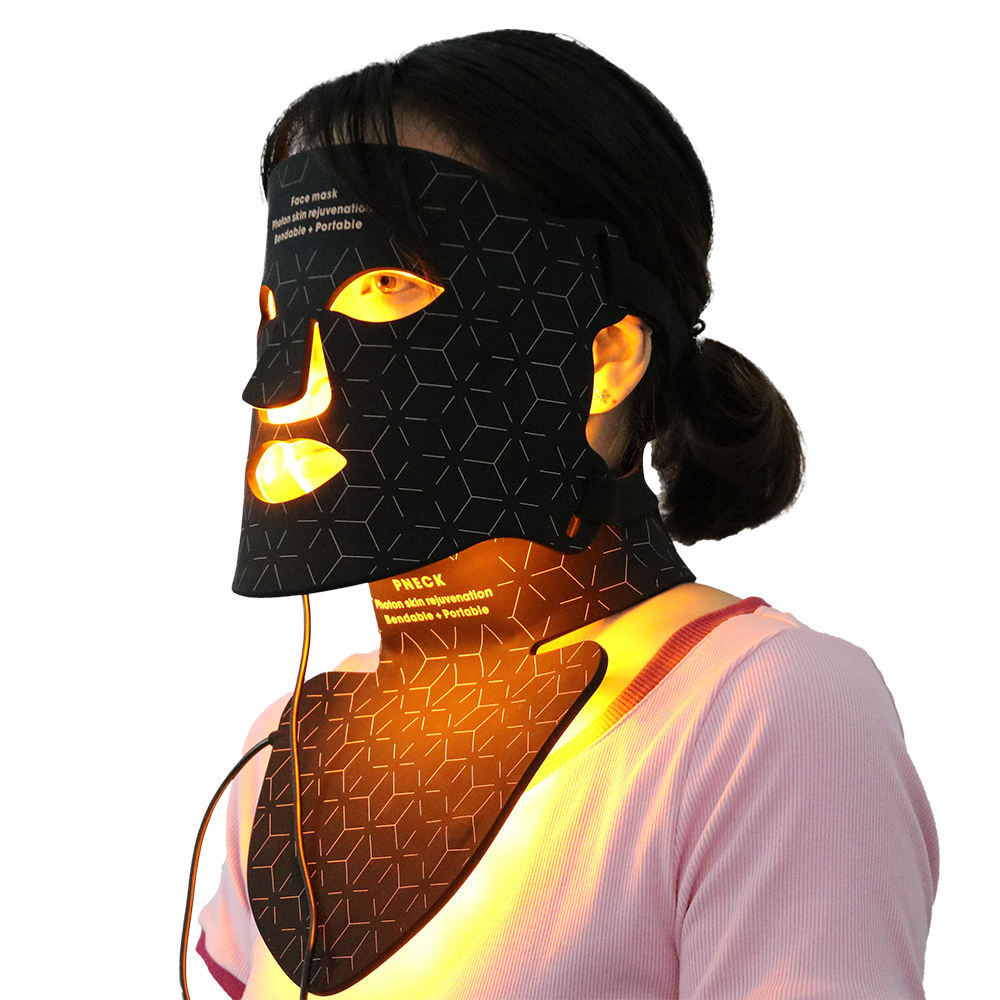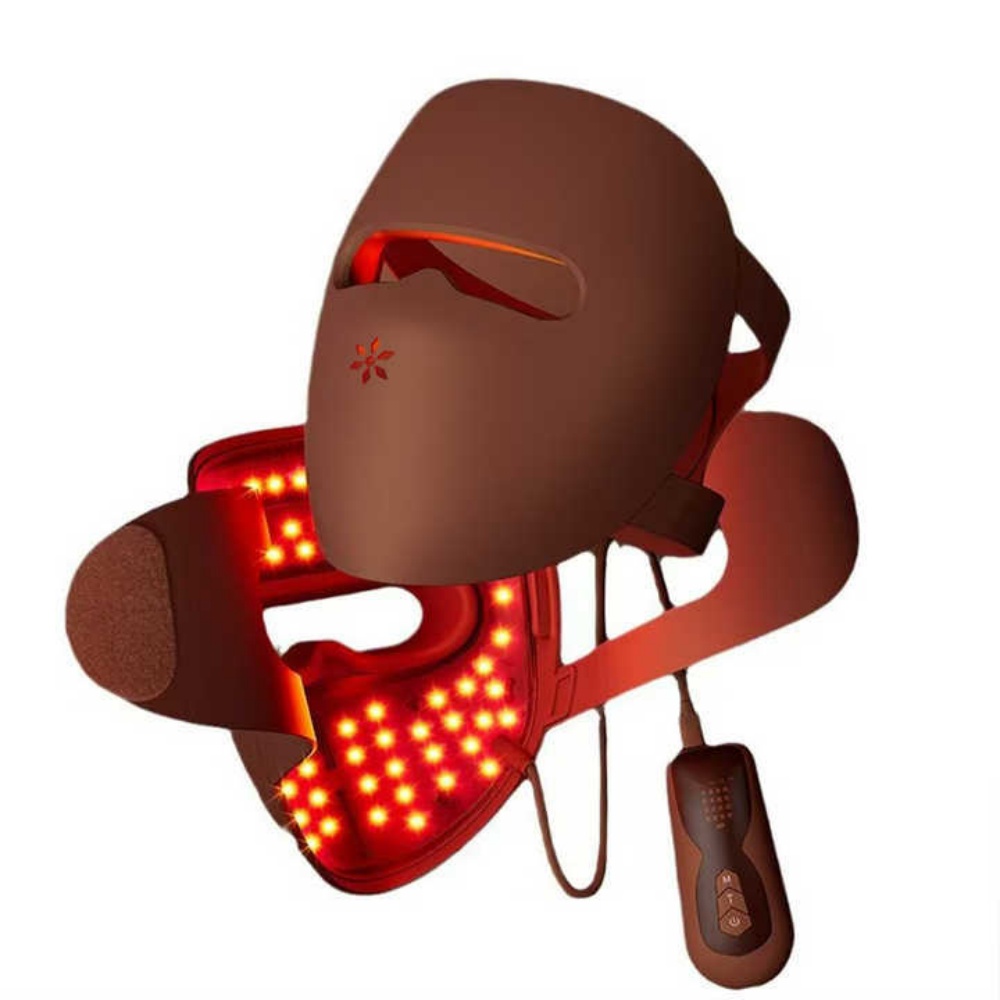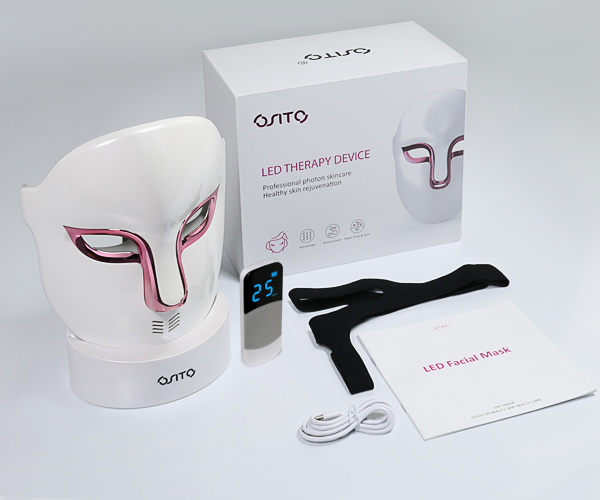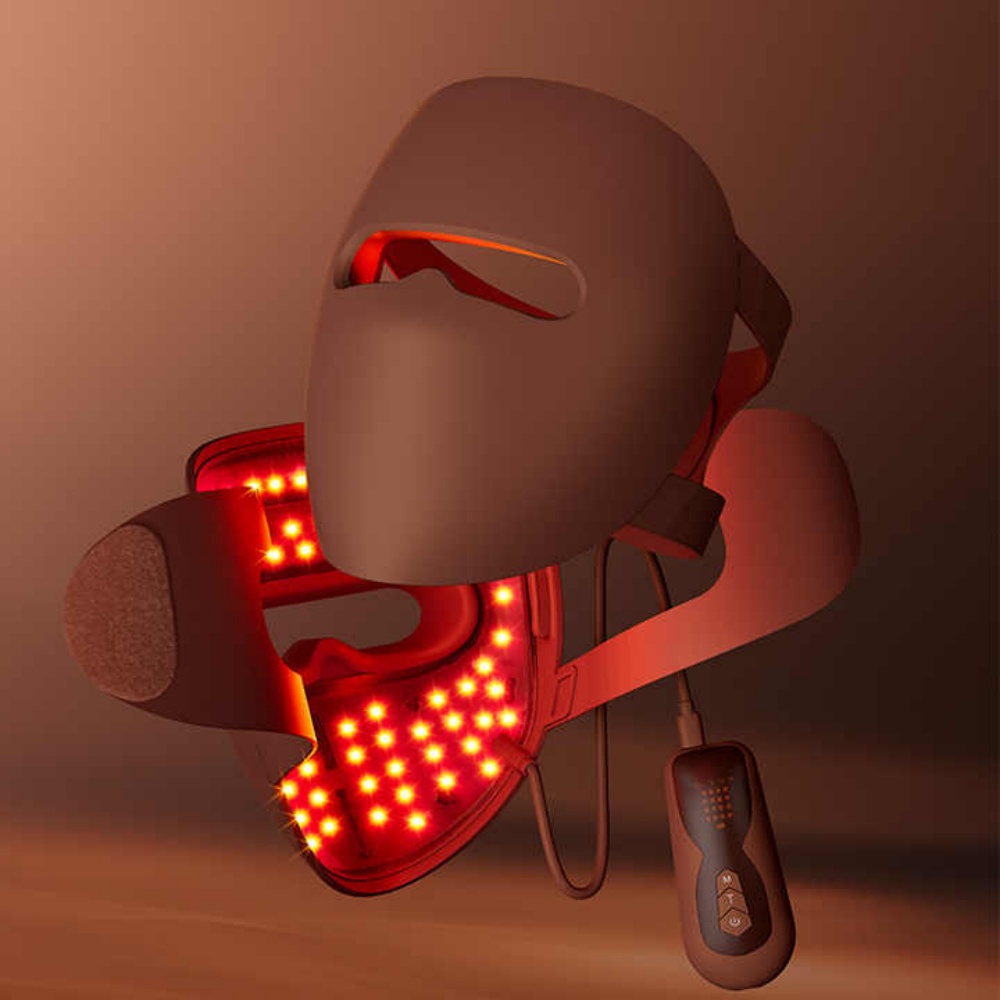What is the difference between red and blue LED masks?
Summary
Red and blue LED masks are popular skincare devices that utilize specific wavelengths of light to address various skin concerns, notably anti-aging and acne treatment. Red LED masks emit light in the wavelength range of approximately 600 to 700 nanometers, penetrating deeply into the skin to promote collagen production, reduce inflammation, and enhance overall skin rejuvenation.
Conversely, blue LED masks operate at shorter wavelengths, between 400 and 490 nanometers, effectively targeting acne by killing bacteria responsible for breakouts and regulating oil production.
These distinctions make both types of masks significant in modern skincare routines. The notable popularity of red and blue LED masks stems from their non-invasive nature and the increasing consumer demand for at-home skincare solutions. Many users appreciate the convenience and efficacy of LED therapy, which allows for targeted treatment without the need for professional salon visits. Recent market trends indicate a projected revenue of $2 billion for LED light therapy masks by 2028, highlighting their growing acceptance and use among various demographics, particularly women aged 25 to 55.
There is also considerable interest in combination LED masks that incorporate both red and blue light therapies, allowing users to address multiple skin concerns simultaneously, such as treating active acne while promoting healing and anti-aging benefits.
However, the efficacy of these therapies is subject to ongoing research, with varying results depending on treatment duration, wavelength, and individual skin types.
As with any skincare treatment, safety considerations are paramount; improper use of LED masks can lead to adverse effects, underscoring the importance of following manufacturer guidelines and consulting healthcare professionals when necessary.
Ultimately, understanding the differences between red and blue LED masks empowers individuals to make informed decisions tailored to their unique skincare needs. As more consumers embrace light therapy as part of their routines, the evolution of LED technology and its applications in skincare continues to capture attention and stimulate discussion within the beauty industry.
Types of LED Masks
LED masks are versatile skincare devices that utilize different wavelengths of light to target various skin concerns. The most commonly used lights in these masks are red and blue, each serving distinct purposes in skincare treatment.
Red LED Masks
Red LED masks operate within the wavelength range of approximately 600 to 700 nm. This low-energy radiation is particularly effective at penetrating the skin, promoting a variety of beneficial effects. Red light therapy is known to reduce inflammation, promote skin healing, and support collagen production, making it a popular choice for anti-aging treatments and overall skin rejuvenation. Additionally, red light may help to calm sensitive skin, enhancing its overall appearance and texture. The mechanism of action for red light involves stimulating cellular processes, which can lead to metabolic changes in skin cells and alterations in gene expression. These changes help in the recovery and regeneration of skin tissue, making red LED masks suitable for individuals looking to address fine lines, wrinkles, and other signs of aging.
Blue LED Masks
In contrast, blue LED masks utilize wavelengths that typically fall between 400 and 490 nm. Blue light therapy is especially effective for acne treatment, as it targets the bacteria responsible for acne breakouts. By penetrating the skin and reducing the activity of these bacteria, blue light helps to decrease inflammation and the severity of acne. The anti-acne properties of blue light make it an essential component of skincare for those dealing with oily or acne-prone skin. Additionally, blue LED masks can work synergistically with red LED masks. Many devices combine both red and blue lights, allowing users to address multiple skin concerns simultaneously, such as treating active acne while also promoting skin healing and anti-aging benefits.
Comparison of Red and Blue LED Masks
Overview of Red and Blue Light Therapy
Red and blue light therapies are two of the most commonly used forms of LED light therapy in skincare, each targeting specific skin concerns. Red light therapy is primarily known for its anti-aging benefits, as it penetrates deeper into the skin to stimulate collagen production and promote healing. In contrast, blue light therapy is effective in treating acne, as it possesses antibacterial properties that combat the bacteria associated with acne and helps regulate oil production.
Mechanism of Action
Red Light Therapy
Red light therapy utilizes wavelengths typically ranging from 600 nm to 650 nm. This light penetrates the skin at a deeper level, leading to enhanced collagen synthesis and reduced inflammation. It is particularly effective for improving skin elasticity, diminishing fine lines, and promoting overall skin rejuvenation. The biochemical reactions triggered by red light also aid in the healing process, making it beneficial for various skin conditions.
Blue Light Therapy
Blue light therapy operates at shorter wavelengths, typically between 405 nm and 420 nm. This type of light targets the surface of the skin, effectively killing acne-causing bacteria, thereby reducing inflammation and preventing future breakouts. The blue light's ability to regulate oil production further enhances its efficacy for those suffering from oily skin and acne.
Combination of Red and Blue Light Therapy
Many LED masks now offer dual settings, combining both red and blue light therapies to address multiple skin concerns simultaneously. This synergy can be particularly advantageous for individuals dealing with both acne and signs of aging, as the blue light combats bacteria while the red light promotes healing and collagen production. Using both therapies together can provide a comprehensive approach to skincare, offering a more well-rounded treatment option.
Considerations for Use
When selecting between red and blue LED masks, it's essential to consider individual skin types and specific concerns. Users seeking anti-aging solutions may prefer red light, while those focused on treating acne might opt for blue light. However, for optimal results, many may find that a mask with both settings serves their needs best, allowing for a versatile and effective at-home treatment. Ultimately, understanding the distinct functionalities of red and blue light therapies enables individuals to make informed decisions about their skincare routines and achieve desired results.
Scientific Research and Evidence
Recent studies have investigated the efficacy of light-emitting diodes (LEDs) in photobiomodulation, particularly focusing on red and blue light therapies. Research findings indicate varying levels of effectiveness based on specific conditions and the wavelengths utilized. For instance, studies published from 2009 to 2021 highlight the potential of red light therapy (RLT) to aid in tissue repair and reduce inflammation, suggesting that it may be beneficial for skin conditions and wound healing. However, experts emphasize that the evidence is not conclusive for all claimed uses, indicating a need for further research to substantiate its effectiveness. Red light therapy is primarily associated with promoting collagen production and improving skin texture, while blue light therapy is often utilized for its antibacterial properties, particularly in the treatment of acne. The mechanisms by which these therapies work involve the stimulation of cellular processes; for example, RLT has been shown to enhance cytochrome c oxidase activity in skeletal muscle, which is vital for cellular respiration and energy production. However, many studies examining RLT include small sample sizes and lack rigorous controls, such as placebo groups, limiting their reliability. Additionally, while some studies demonstrate positive outcomes for hair growth and the reduction of tissue inflammation, there remains considerable variability in the results based on the strength and duration of treatment, especially with at-home devices. Concerns regarding safety have also been raised, with reports of adverse effects such as burns and eye damage when devices are not used according to guidelines. While RLT is generally considered safe when applied correctly, it is essential for users to adhere to safety protocols to mitigate these risks. As a result, individuals interested in LED therapies are encouraged to consult healthcare professionals to determine the most appropriate treatment for their specific skin conditions and to discuss potential risks associated with DIY treatments.
Usage and Application
Overview of LED Masks
LED masks are designed to address various skin concerns using specific light wavelengths, primarily red and blue light. Red light therapy is commonly used for anti-aging benefits, promoting collagen production, and reducing the appearance of fine lines and wrinkles, while blue light therapy targets acne by killing bacteria that contribute to breakouts. Some LED masks come with different color settings, allowing users to customize their treatment according to their skin's needs.
Treatment Protocol
The application of LED masks typically requires a clean, makeup-free face. Users may be advised to perform additional preparatory treatments, such as facials, to enhance the effectiveness of the LED therapy. For optimal results, users are often instructed to wear safety goggles during treatment to protect their eyes from bright lights. Treatments generally last about 20 minutes, with sessions recommended two to three times per week, depending on the device and skin concerns.
Device Variations and User Experience
The ease of use and comfort of LED masks are significant advantages over other skincare devices, such as microdermabrasion machines. Most masks are lightweight and feature adjustable straps to ensure a secure fit. They are designed for non-invasive application, allowing users to multitask during treatment, making them ideal for those with busy lifestyles. The time commitment varies; some devices require as little as a few minutes per day, while others may necessitate longer usage.
Smart Technology Integration
Many modern LED masks incorporate smart technology, such as Bluetooth connectivity and smartphone applications, to provide users with customized treatment plans and data tracking for personalized results. This technological advancement enhances the user experience and encourages adherence to treatment protocols, contributing to better outcomes.
Market and Brands
The LED light therapy mask market is experiencing notable growth, with a projected revenue of $2 billion by 2028. This market primarily targets women aged 25-55, although a growing segment of male consumers is emerging as skincare awareness increases among men. Despite the current moderate level of market penetration, there is significant untapped potential within these demographics, indicating opportunities for brands to expand their customer base.
Trends Influencing the Market
Several key trends are driving the growth of the LED light therapy mask market. One prominent trend is the rise of e-commerce, which is expected to account for approximately 65% of total market revenue by 2028. Online platforms not only offer convenience but also empower smaller brands to compete with established players through direct-to-consumer (DTC) marketing strategies. The increase in online reviews and social media testimonials further bolsters consumer confidence in purchasing these products. Additionally, the demand for multifunctional devices is on the rise, with consumers showing a preference for masks that integrate various light wavelengths—such as red, blue, and near-infrared—into a single product. This all-in-one approach simplifies skincare routines and enhances customer satisfaction.
Competitive Landscape
The competitive landscape of the LED light therapy mask market is characterized by a concentration of players within the premium segment, which accounts for approximately 60% of the market value. Companies like Therabody and décoLITE are significant market leaders, known for their high-quality materials and advanced technology offerings. Meanwhile, the mass market segment, which focuses on affordability and basic functionality, comprises around 40% of the market value, presenting substantial growth potential for emerging brands.
Innovations and Consumer Preferences
The market is also witnessing a premiumization trend, where high-end brands are investing in superior design and advanced technology to justify higher price points. This shift reflects a growing consumer willingness to invest in luxury skincare experiences. Furthermore, the integration of smart technology into products, such as Bluetooth connectivity and personalized smartphone applications, is enhancing user experience and promoting brand loyalty among consumers seeking customized skincare solutions.
 English
English Español
Español Português
Português Pусский
Pусский Français
Français Deutsch
Deutsch 日本語
日本語 한국어
한국어 Italiano
Italiano عربى
عربى




